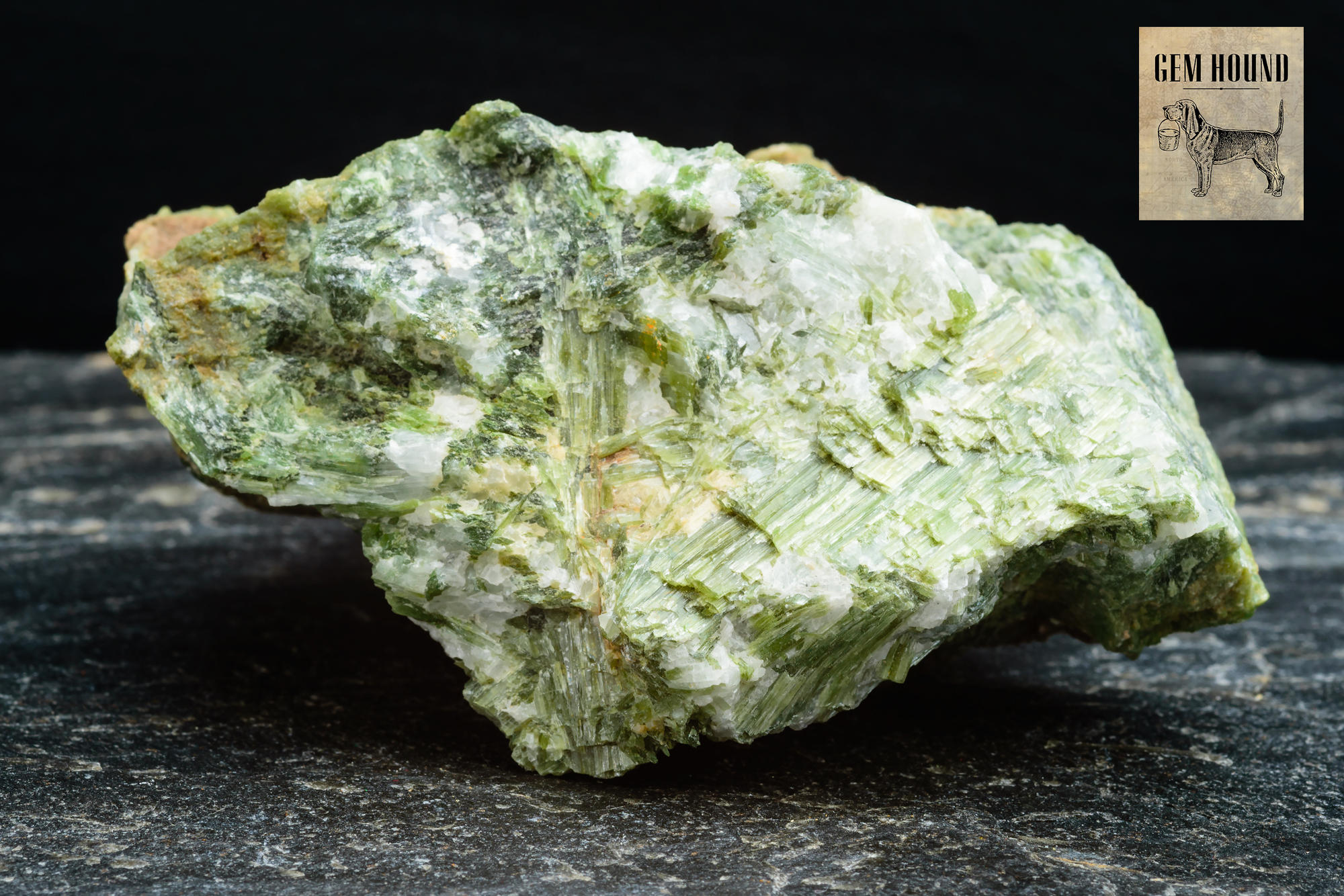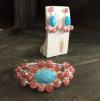It’s always fun to introduce a new Mine Finds gemstone from Jay. In our May show he will present a couple of necklaces that showcase Diopside. Many of you may be familiar with the stunning emerald green of Chrome Diopside we’ve had in the past, which is just one of several types of Diopside. This time jay is going to present a dark green and a light blue diopside. In his travels, Jay found them in Madagascar and South Africa, respectively.
The type of diopside depends on its chemical structure-namely, what’s in it. The darker the color, the more iron it contains (and the less transparent it becomes), or the more chromium, the more emerald green it looks. As a side note, Chrome Diopside is a beautiful transparent green resembling an emerald. Did you know that emeralds are very often treated to seal and hide fractures? Chrome Diopside is nearly always natural and untreated. It’s also much more affordable.
In a nutshell, the basic characteristics of Diopside include a range of colors such as light to dark green, blue, brown, colorless, white and grey. It has a vitreous (glassy) luster and can be opaque or transparent. It is of medium hardness, but should still be protected from hard knocks and scratches. Clean with warm, soapy water and a soft cloth. Nothing more.
Diopside has an interesting geologic use. Because of the many complex factors and events that occur during volcanic activity, diopside can sometimes lead geologists to formations called diamond pipes. These are vertical structures formed during deep mantle eruptions that can contain diamonds and diopside fragments. The diopside, which appears on the surface as a result of erosion, can be easily spotted and lead one to a diamond pipe. This is called “trail-to-lode” prospecting. Unfortunately, the chance of actually finding diamonds in a pipe is nearly zero, so don’t quit your day job!
Enjoy the May show and, as always…
Happy Hounding!









